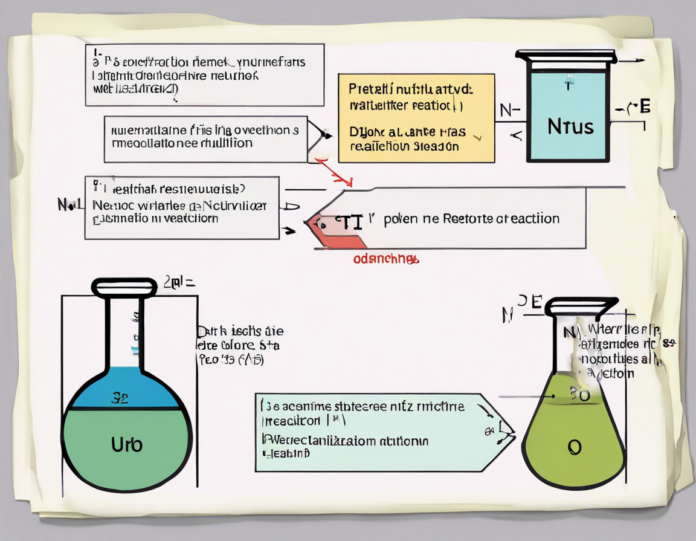Neutralization reactions are a fundamental concept in chemistry that occur when an acid and a base react to form water and a salt. This process involves the transfer of protons between the acid and the base, resulting in the formation of a neutral solution. Understanding neutralization reactions is crucial not only for academic purposes but also in various industrial applications. In this comprehensive guide, we will delve into the intricacies of neutralization reactions, explore examples to illustrate the concept, and address common misconceptions associated with this chemical phenomenon.
Introduction to Neutralization Reactions
What are Neutralization Reactions?
Neutralization reactions are chemical reactions that occur between an acid and a base to produce water and a salt. The reaction involves the combination of H+ ions from the acid with OH- ions from the base to form water (H2O). The remaining ions then combine to form a salt.
Key Components of Neutralization Reactions
-
Acid: Acids are substances that can donate protons (H+) in a chemical reaction. Examples include hydrochloric acid (HCl) and sulfuric acid (H2SO4).
-
Base: Bases are substances that can accept protons (H+) in a chemical reaction. Examples include sodium hydroxide (NaOH) and potassium hydroxide (KOH).
-
Salt: Salts are ionic compounds formed from the reaction between an acid and a base. The cation comes from the base, and the anion comes from the acid.
The Role of pH in Neutralization Reactions
pH is a measure of the acidity or basicity of a solution. A neutral pH is 7, indicating a balance between acidity and alkalinity. During neutralization reactions, the pH of the solution changes as the acid and base react, eventually reaching a neutral pH of 7 when the reaction is complete.
Examples of Neutralization Reactions
1. Hydrochloric Acid (HCl) + Sodium Hydroxide (NaOH)
HCl + NaOH → NaCl + H2O
In this reaction, hydrochloric acid reacts with sodium hydroxide to produce sodium chloride (table salt) and water.
2. Sulfuric Acid (H2SO4) + Potassium Hydroxide (KOH)
H2SO4 + 2KOH → K2SO4 + 2H2O
Sulfuric acid reacts with potassium hydroxide to yield potassium sulfate and water in this neutralization reaction.
3. Nitric Acid (HNO3) + Calcium Hydroxide (Ca(OH)2)
2HNO3 + Ca(OH)2 → Ca(NO3)2 + 2H2O
Nitric acid reacts with calcium hydroxide to form calcium nitrate and water.
Common Misconceptions about Neutralization Reactions
1. Neutralization Always Results in a Neutral pH
While it is true that neutralization reactions tend to result in a neutral pH, factors such as the strength of the acid and base can influence the final pH of the solution. Strong acids and bases may not always lead to a pH of exactly 7 after neutralization.
2. Water is the Only Product of Neutralization
In addition to water, neutralization reactions produce salts. These salts can be acidic, basic, or neutral depending on the specific acid and base involved in the reaction.
3. Neutralization Reactions Only Involve Strong Acids and Bases
Neutralization reactions can occur between both strong and weak acids and bases. The extent of the reaction will depend on the strength of the acid and base involved.
Industrial Applications of Neutralization Reactions
-
Wastewater Treatment: Neutralization reactions are commonly used in wastewater treatment to adjust the pH of effluents before discharge into the environment.
-
Production of Fertilizers: Neutralization reactions are essential in the production of fertilizers, where acids and bases are combined to create nutrient-rich salts for plant growth.
-
Manufacturing Processes: Various manufacturing processes utilize neutralization reactions to control pH levels, prevent corrosion, and facilitate the formation of desired products.
FAQs about Neutralization Reactions
1. What is the difference between a strong acid and a weak acid in a neutralization reaction?
In a neutralization reaction, a strong acid completely dissociates into ions in solution, while a weak acid only partially dissociates. Strong acids react more vigorously with bases compared to weak acids.
2. Can neutralization reactions occur without water as a product?
While water is a common product of neutralization reactions, some reactions may produce other byproducts depending on the specific acids and bases involved.
3. How can you calculate the amount of acid or base needed for neutralization?
You can use stoichiometry to calculate the amount of acid or base needed for neutralization based on the balanced chemical equation of the reaction and the molar ratios of the reactants.
4. What happens if you add too much acid or base in a neutralization reaction?
Adding excess acid or base in a neutralization reaction can shift the equilibrium, potentially leading to an incomplete reaction or the formation of undesired byproducts.
5. Can neutralization reactions be reversed?
Neutralization reactions are typically irreversible under normal conditions. However, in some cases, by changing the conditions such as temperature or pressure, it may be possible to reverse the reaction.
In conclusion, neutralization reactions play a vital role in chemistry and various industries, showcasing the interplay between acids, bases, and salts. Understanding the principles of neutralization reactions is essential for mastering chemical concepts and their practical applications in real-world scenarios.

